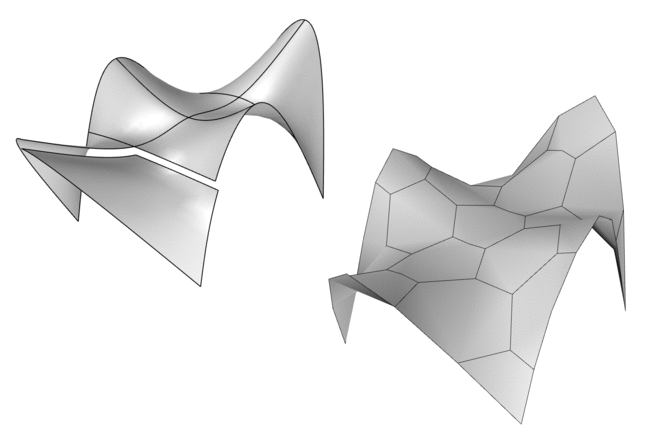Hello @Petras_Vestartas
Is HexDivide U,V inputs limited to 100?
Oops:
I will change, probably it was a security stop for a student workshop, I will remove it.
At least now I can get a feedback, let me know if you spot smth else.
Remembering discussion about seams:
There is another trick in this component, if you have multiple breps and use joined brep aligned edges polygons will be merged at the seam if it is geometrically possible. In that case division works by distance.
Thank you i will try it
There is something else, and i think you can easily change it.
Parameter input at 0 and 1 give invalid mesh and invalid polyline but still exist and we can bake it.
at 0 give diamonds grid ; and at 1 give triangular grid.
I can add constraint not to move until 0 and 1, but to 0.01 and 0.99, because the meshing would fail at this point when two points are at the same location. Or I could merge points at this tolerance.
In this case you would use diamond subdivision not hex.
The same stuff is for bigger or lower values, since you would never want to have values less than 0 and higher than one as meshing is not possible.
Can you make it when T=0 the grid will be diamond, when T=1 the grid will be triangular
because the output curves already exist just the mesh invalid but valid when we bake it
I think this will be better
Yup that can be done as follows.
When t = 0, grid is diamond, when 1 I recreate the full mesh, for now I will keep seems for t ==1, since users can use diamond grid.
Here is a tesselation on brep composed from 8 surfaces:

Very nice waiting for the update
Thank you i will test it
I test it but something wrong with HexDivide
if U,V more than 100 , T=1 don’t give any result
if U or V = 100 and the other > 100, Grasshopper at T=1 become very solw
T = 0 always give invalid mesh
Is this the right version like in the videos?

Can you add a component to show the version info like in Paneling tools?
You are testing the sphere, which I am surprised that it even works for values between 0.001-0.999.
For normal surfaces, is it the same?
Rectangular surface work in all cases
Cylindrical surface:
Paraboloid:
Every surface is different than the other
Thanks I ll take a look at these cases for 0 and 1 .














